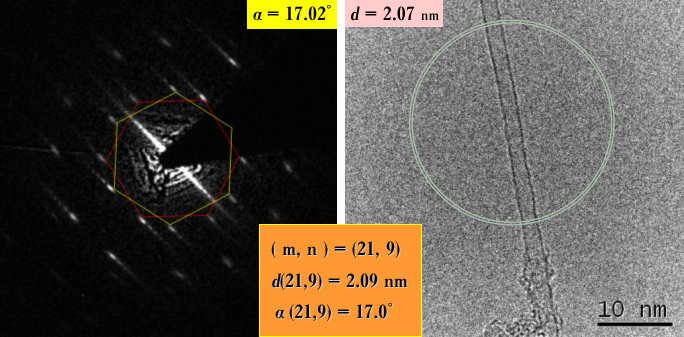| 講演要旨 |
We have developed a novel aerosol (floating catalyst) method for the SWCNT nucleation and growth in the gas phase. The difference between the existing methods and new one is in the production of catalyst particles. Typically, catalyst particles in the aerosol methods are formed by a decomposition reaction of catalyst precursor followed by the formation of catalyst clusters. In our method the catalyst particles were formed by physical evaporation from a resistively heated metal wire, subsequent nucleation of cluster in the boundary layer of the wire and further introduction of the formed catalyst particles into the conditions for the CNT formation. The experiments were carried out in a laminar flow reactor using both Fe and Ni as catalyst cluster material and both CO and ethanol as carbon sources. The growth of SWCNTs occurs in the overall reactor wall temperature range from 600 to 1500°C when using CO as carbon source. The number mean size of catalyst particles was controlled from 1 to 3 nm, while the corresponding diameter of formed CNTs ranged from 0.6 to 2 nm. The ratio of catalyst cluster diameter to that of SWCNT diameter was 1.6. The critical role of oxidizing trace gas components (e.g. carbon dioxide and water) during the processes of SWCNT nucleation and growth is shown. The distributions of SWCNT properties, including size, length and their chirality, were determined from HR-TEM images and using electron diffraction, and combined with optical characterization results. Especially, we optimized SWCNT chirality determination via electron diffraction and adapted this method to observe the chirality distribution of SWCNT’s produced from ethanol (Figure 1), with chiral angle distributions peaking at values close to those of armchair and zigzag tubes. The results of Computational Fluid Dynamics (CFD) and combined aerosol dynamics modelling for reactor conditions and evolution of catalyst cluster size distributions are presented. The mechanisms of CNT formation and growth in the gas phase are discussed, based on both experimental and modelling results. Comparative results will be presented for both ironpentacarbonyl- and benzene-derived catalysts in similar reactors using CO as carbon source. In addition, results on surface CVD synthesis from CO of up to 7 mm long and ultra large diameter (up to 10 nm outer diameter) SW- and DWCNT’s will be presented, using Fe clusters produced via vapour condensation method deposited directly onto SiO2 substrates. |


